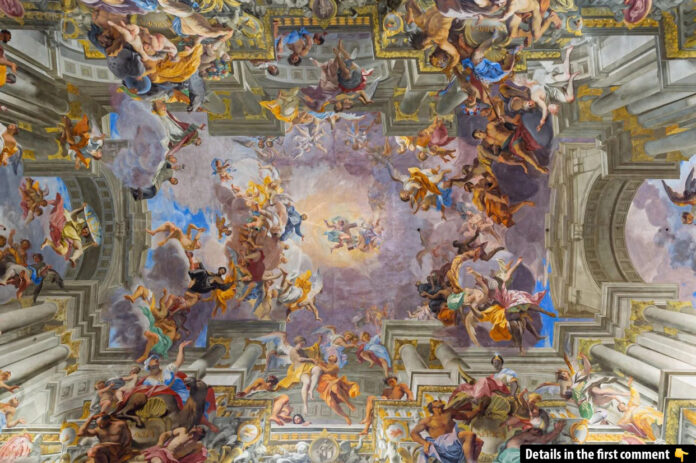In the heart of Rome lies a church that captivates millions, not just for its religious significance but for its breathtaking visual spectacle. The Church of Saint Ignatius, or San Ignazio, has become a modern viral sensation thanks to its 350-year-old ceiling masterpiece by Andrea Pozzo. While tourists flock to this Instagram-worthy location, there’s much more to the story than meets the eye—literally. Pozzo’s optical illusion painting is a marvel of both art and science, blending religious devotion with groundbreaking techniques that continue to inspire awe today.
Andrea Pozzo and His Masterpiece
Between 1688 and 1694, Andrea Pozzo, a Jesuit artist and mathematician, transformed the ceiling of Saint Ignatius into a masterpiece that defied perception. His work centers on Saint Ignatius of Loyola, the founder of the Jesuit order, depicted ascending to heaven through beams of divine light. Surrounding this celestial scene are symbolic representations of the four continents, showcasing the Jesuits’ global missionary reach.
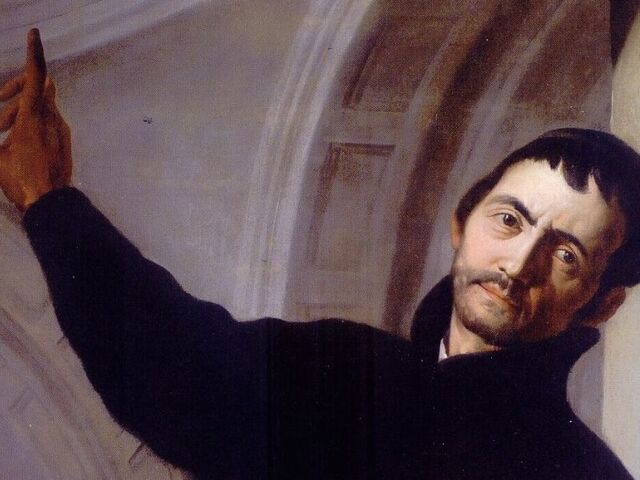
What makes Pozzo’s painting extraordinary is its illusion of infinite height. From the central viewing point on the church floor, the ceiling appears to rise endlessly, as if the roof has been lifted off entirely. Angels dangle their feet from clouds, saints gaze downward, and animals emerge from behind columns. This seamless blend of painted figures and architectural elements tricks the eye into believing the ceiling stretches far beyond its actual dimensions.
Video
Discover the stunning fresco Glorification of Saint Ignatius by Andrea Pozzo in Sant’Ignazio – watch the video to explore the artistic brilliance and hidden optical illusions of this Baroque masterpiece!
The Science Behind the Illusion
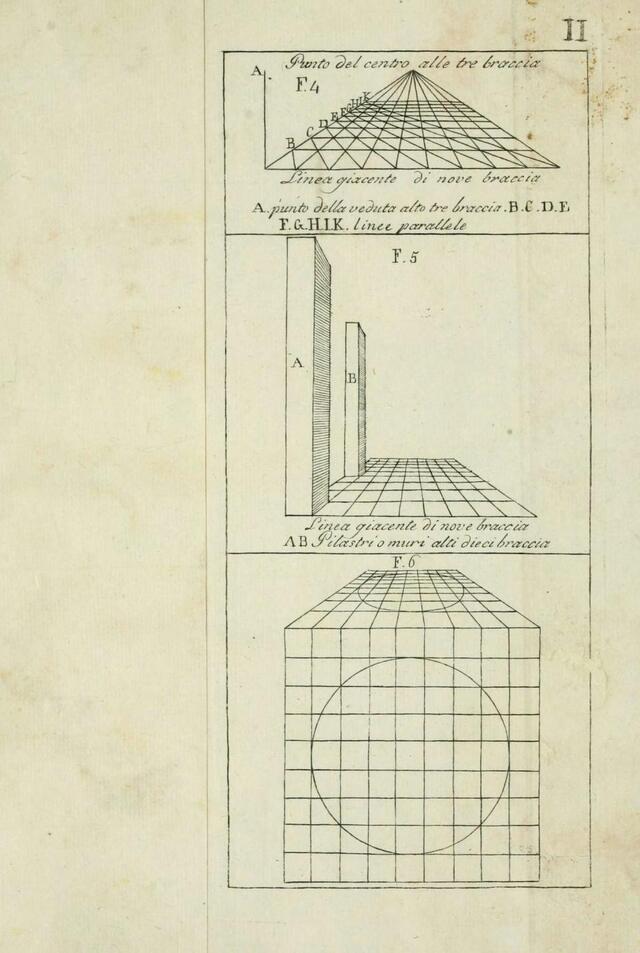
Pozzo’s illusionistic ceiling exemplifies the Baroque period’s fascination with linear perspective, a technique refined by artists since the 15th century. Linear perspective uses converging lines to create the illusion of depth on a flat surface. Pozzo pushed this concept further, using advanced geometry to make a curved ceiling appear flat and infinitely expansive.
To achieve this effect, Pozzo first created detailed drawings divided into grids. These grids were then transferred onto the ceiling using strings to ensure precision. He chose a specific central point on the floor as the optimal viewing angle, from which the illusion would appear seamless. Up close, the figures and lines are distorted and stretched, but from the designated spot, they form a flawless visual trick.
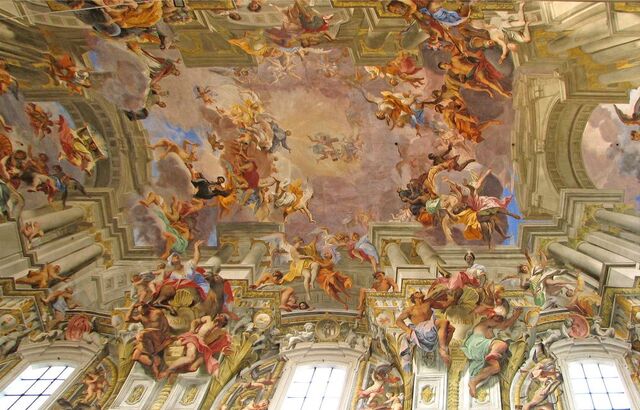
Art Meets Science: The Study of Vision
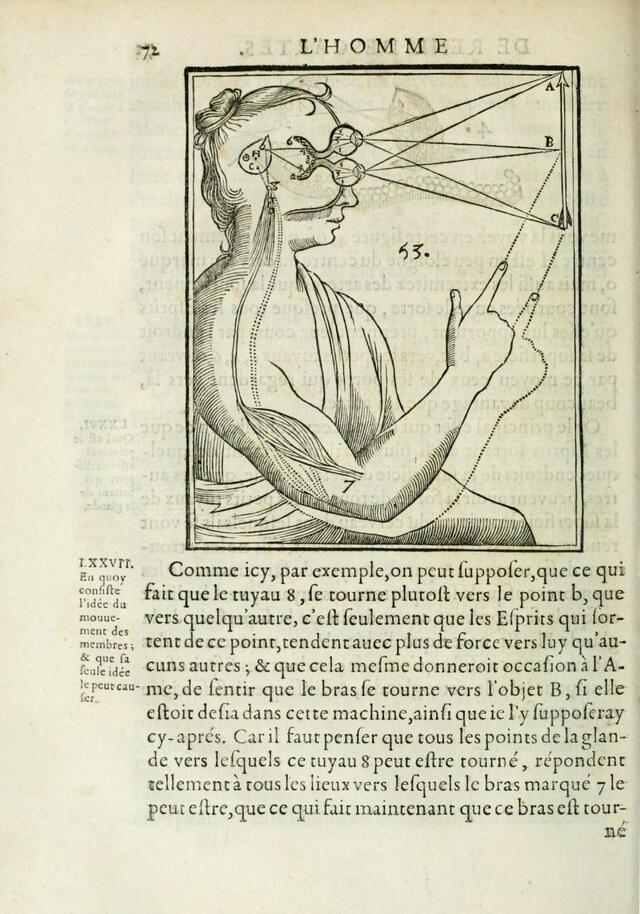
Pozzo’s work wasn’t just a triumph of artistic skill—it was deeply informed by the scientific discoveries of his time. The 17th century saw groundbreaking advancements in optics, particularly the work of Johannes Kepler and René Descartes. Kepler proposed that vision results from light passing through the eye and forming an image on the retina. Descartes expanded on this idea, suggesting that these images are transmitted to the brain, likening the process to painting.
This new understanding of vision influenced how artists like Pozzo approached their work. They recognized that the eye could be manipulated, creating optical illusions that blurred the line between reality and imagination. Pozzo’s painting is a testament to this interplay of art and science, turning the ceiling of Saint Ignatius into a stage for visual wonder.
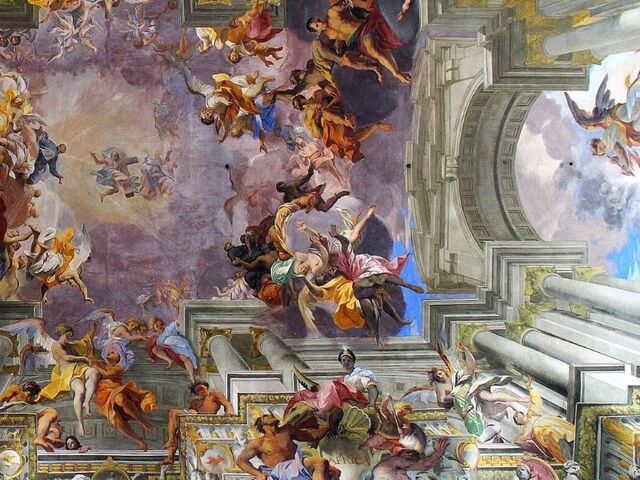
Religious Purpose and Emotional Impact
For the Jesuits, art was more than decoration—it was a tool for religious education and inspiration. The Jesuit order embraced theatricality and spectacle as a means to convey spiritual messages, and Pozzo’s ceiling fits perfectly within this mission. The moment of wonder experienced by viewers was intended to deepen their faith, transforming awe into devotion.
Pozzo’s depiction of Saint Ignatius ascending to heaven wasn’t just a visual feast; it was a theological statement. The illusion of infinite height symbolized the transcendence of earthly limitations and the promise of eternal life. By making abstract concepts like faith and heaven tangible, Pozzo’s work helped believers connect more deeply with their spirituality.
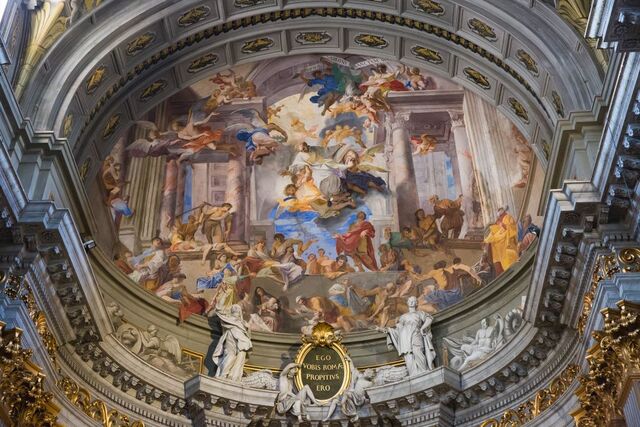
The Modern Fascination with Pozzo’s Illusion
Fast forward to the 21st century, and Andrea Pozzo’s ceiling has found a new audience through social media. Tourists queue up to take selfies in a strategically placed mirror that reflects the painting, offering the perfect angle to capture its illusionistic brilliance. While many visitors may initially be drawn by the promise of a stunning photo, they often leave with a newfound appreciation for Pozzo’s artistry and the story behind it.
So why does this 350-year-old painting still resonate today? Part of its appeal lies in the timeless human fascination with perception and reality. We know the illusion isn’t real, yet our brains can’t help but register it as such. This visual dissonance is both intriguing and delightful, reminding us of the power of art to challenge and expand our understanding of the world.
Lessons from the Past in a Digital Age
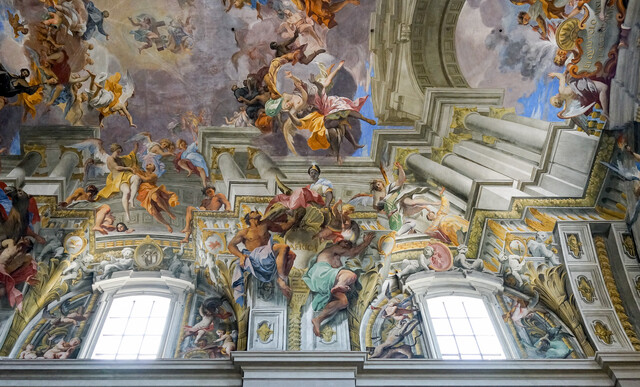
In an era dominated by digital manipulation and constructed images, Pozzo’s ceiling offers a poignant reminder of the artistry and ingenuity that predate modern technology. Unlike digital illusions, which can be created with a few clicks, Pozzo’s work required years of meticulous planning, mathematical precision, and artistic mastery.
It also invites us to reflect on the nature of truth and perception. Just as viewers in the 17th century grappled with the idea that their eyes could be deceived, we too must navigate a world where appearances often belie reality. Pozzo’s ceiling serves as both a celebration of human creativity and a cautionary tale about the limits of perception.
Conclusion
Andrea Pozzo’s ceiling in the Church of Saint Ignatius is more than just a viral selfie spot—it’s a masterpiece that bridges art, science, and spirituality. Its optical illusion continues to captivate viewers, drawing them into a world where the boundaries between reality and imagination blur. In an age of fleeting digital wonders, this 350-year-old painting stands as a testament to the enduring power of human ingenuity and the universal appeal of visual storytelling. Whether you visit for faith, fascination, or a photo, Pozzo’s masterpiece offers an experience that lingers long after you’ve left the church.
